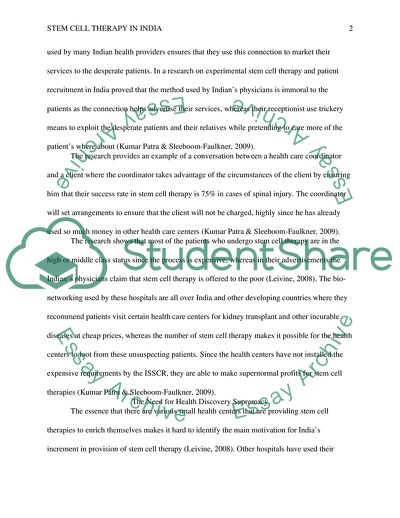Legal and Ethical Aspects of Stem Cell Research in the US and India Paper. https://studentshare.org/medical-science/1865346-the-legal-and-ethical-aspects-of-the-stem-cell-research
Legal and Ethical Aspects of Stem Cell Research in the US and India Paper. https://studentshare.org/medical-science/1865346-the-legal-and-ethical-aspects-of-the-stem-cell-research.


